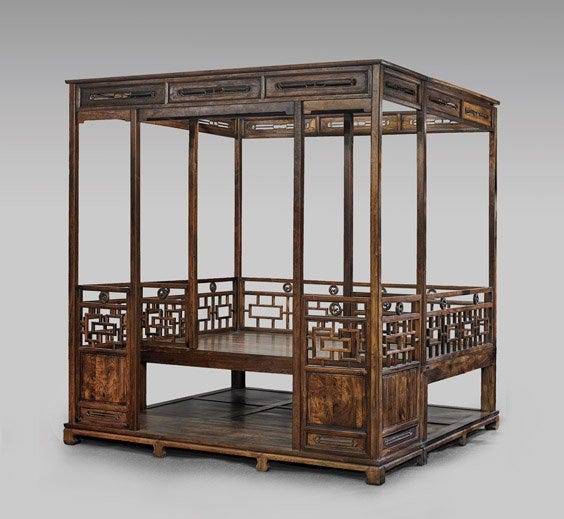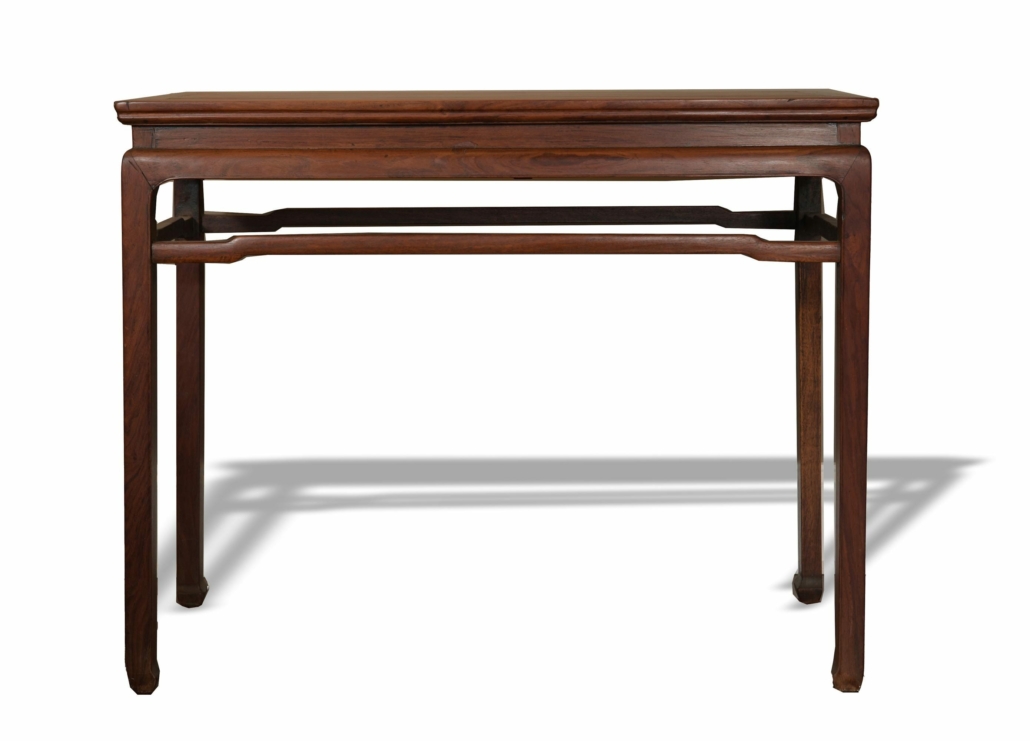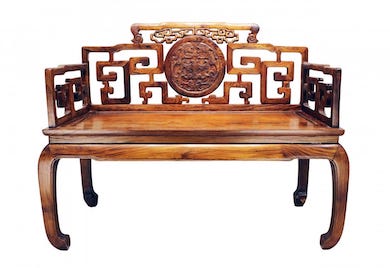
NEW YORK — While elmwood may be the most common wood used in Chinese furniture, hardwoods such as rosewood are sought after. The two most coveted forms of Chinese rosewood furniture are zitan and huanghuali, and their beauty is widely admired.
“Both types of rosewood have always been highly prized,” said auctioneer Jake Chait of Los Angeles-based auction house I.M. Chait Gallery/Auctioneers. He explained huanghuali is a light rosewood, often yellow in tone, while zitan can range from dark red and purple to almost black. Both are well collected but, according to Chait, “zitan is, and has always been, more widely coveted because it was a lot harder to acquire, so there wasn’t as much of it. It was more scarce, therefore more highly prized.”
Zitan is a slow-growing tree, hence its scarcity and high price tag. Both zitan and huanghuali are dense woods, but zitan is especially dense. It experiences slow growth that creates a fine grain, which in turn makes the wood challenging to carve but gives a luxurious appearance to a finished piece when it is masterfully done. Huanghuali furniture is slightly less scarce, yet valuable. Both woods are typically carved into ornate furniture that incorporates auspicious motifs such as writhing dragons and clouds, scrollwork, or geometric patterns. The furnishings are rarely stained or decorated; usually, they receive only a coating of clear lacquer to allow the qualities of the wood to shine through.

From elegant canopy beds and multiple-panel screens to armchairs, tall cabinets, scholar’s desks, and even simple tables, furniture made from these woods has long been prized. Their appeal lies not only in the gorgeous material but the craftsmanship of their creation, which relies on ancient techniques of interlocking joint construction instead of glue or nails. Zitan and huanghuali furniture is being made today in the same centuries-old styles because people still want them.
“A lot of collectors I know are drawn to it out of an appreciation for the craftsmanship, and a larger number than you think actually purchase these things for use, not for isolated display,” Chait said. “I don’t mean high-usage, but quite a number of pieces will go into someone’s home and they will sit in the chair that they purchased, the 17th century huanghuali chair they purchased. It is a true appreciation for the art form, just like anyone would appreciate an impressionist painting.”

The grain in huanghuali is alluring, and some people have described patterns in the grain that resemble ghostly faces. “There is a very unique pattern in huanghuali and sometimes you see what can resemble a face,” Chait said. “You don’t quite see that as much in zitan because it’s so dark and when you shine a really, really bright light on zitan, you have this amazing color that comes out.” The inner glow of huanghuali, coupled with a patina developed from many years of handling, creates vibrant furnishings that possess a matchless appeal. “While you have to be delicate with them, they are still amazing pieces of furniture that you could use everyday if you wanted to. You really could use one of these things as a functional object on a daily basis and not really worry about anything going wrong because it is just so well-crafted, especially with some of the harder woods — use it as a writing table because that’s what it was for 300-plus years.”

New collectors should take care to confirm that pieces represented as zitan or huanghuali are genuine, Chait explained. “They need to understand what they are buying so they are not mistaken, miseducated, or in some cases unfortunately misled into buying something that is not correctly represented.”
Factors used to evaluate a piece of Chinese rosewood furniture include carving style, craftsmanship, proportion, condition, and age. Chait said evaluating a piece, particularly its age, is detective work. One telltale sign is looking at the feet. Many Chinese homes had stone, wood, or even dirt floors, depending on the affluence of the owner, and the feet of the furnishings can suffer minor signs of water damage. “The feet have this kind of wear and it is not considered a negative flaw, it’s actually considered a positive thing because it really helps determine the age,” he said. “It’s hard to replicate that level of wear.”

The market for zitan and huanghuali furniture has been consistently strong, with demand outpacing the supply of good antique pieces. “Chinese furniture is so scarce these days that [when] a real Ming dynasty huanghuali table or even a pair of chairs come up for auction, you have severe competition and people fighting to buy them,” Chait said.



